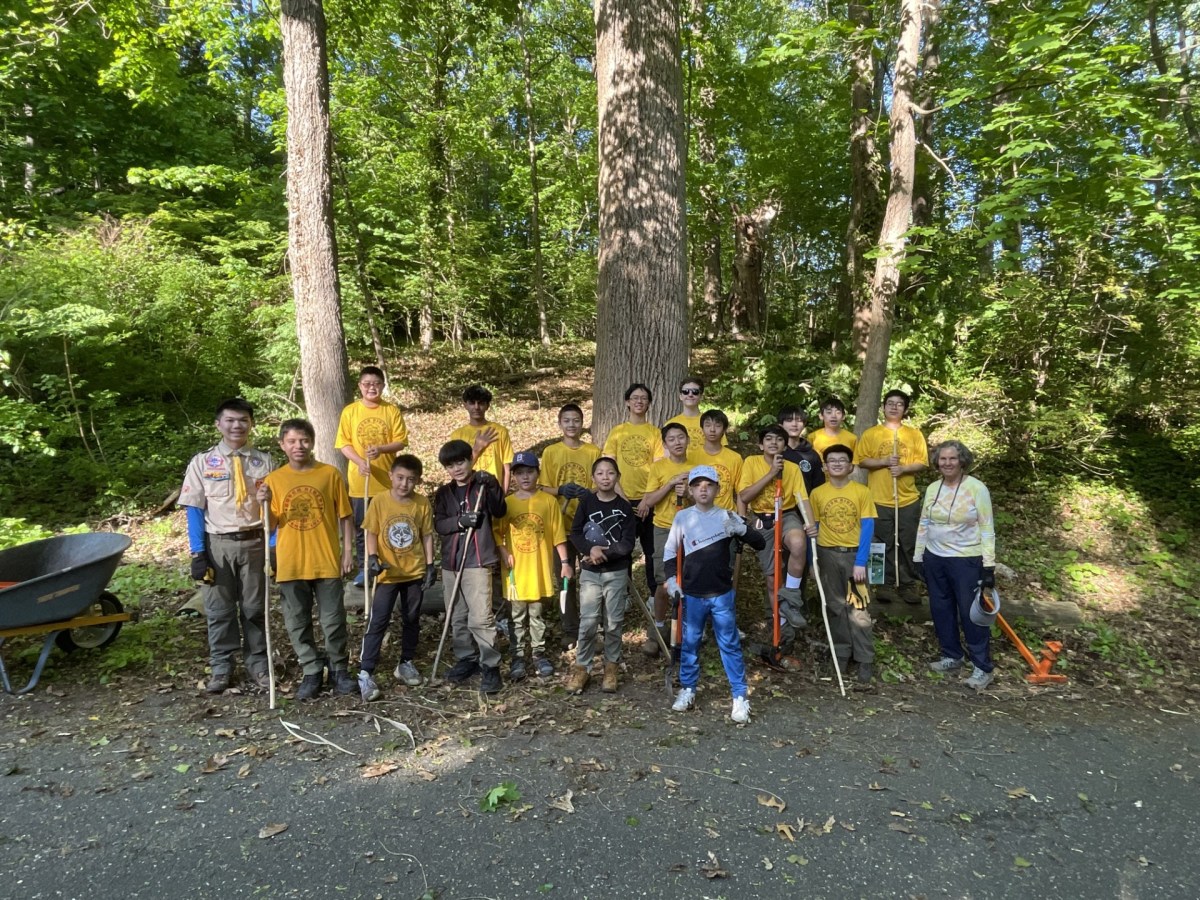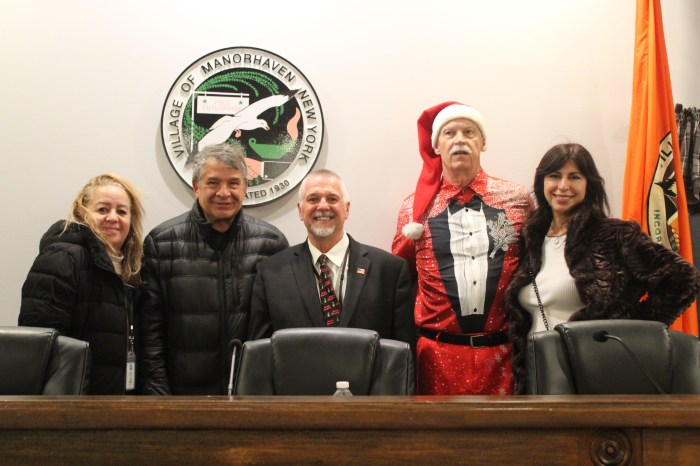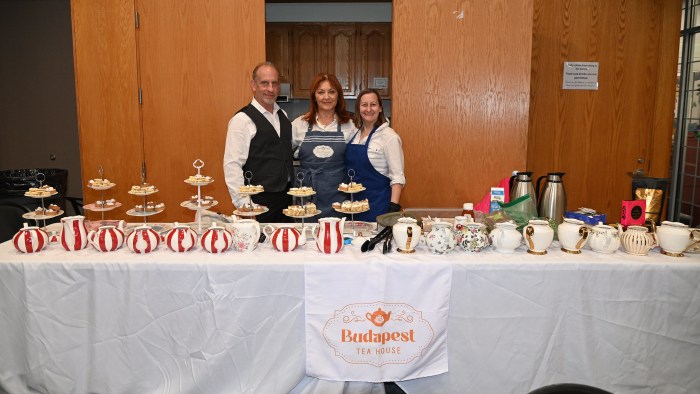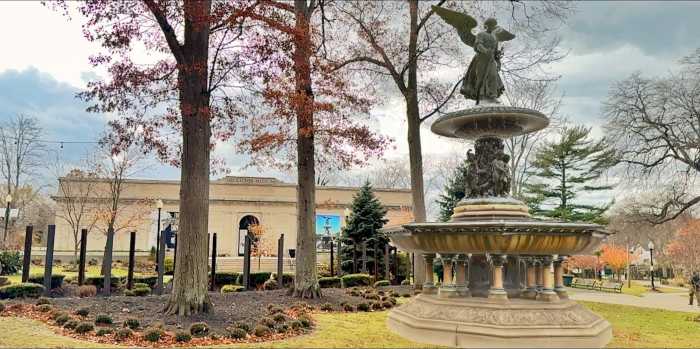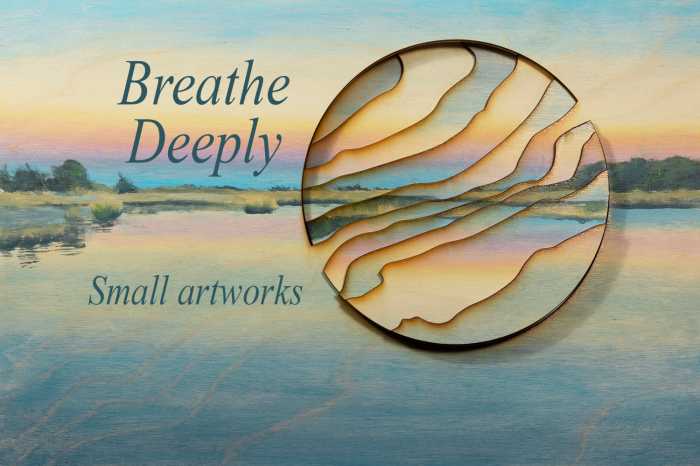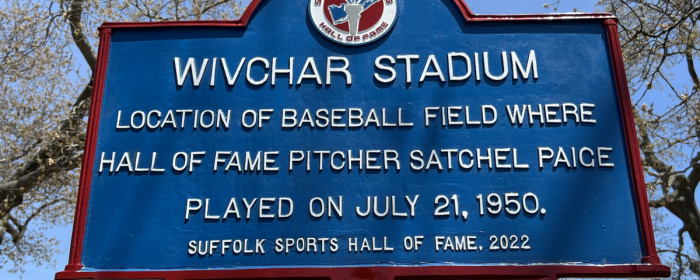Once referred to by local naturalists as the museum of invasive plants, the 36-acre Leeds Pond Preserve is now steadily transforming into a thriving ecosystem.
Eagle Scout projects—one of many initiatives at the Science Museum of Long Island over the last few years—are helping to remove invasive plants and replace them with native species, creating a healthier habitat for wildlife, including the 168 species of birds identified on the preserve.
Trustee Peggy Maslow, who also serves as North Shore Audubon Society Education Chair, has been instrumental in leading scout troops through these restoration projects, ensuring each effort not only benefits the land but also teaches valuable ecological lessons.
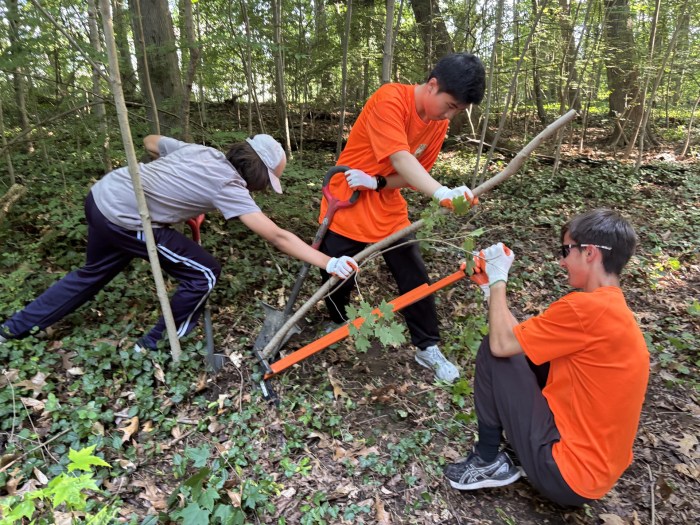
On May 3, Boy Scout Harry Yu led Great Neck Troop 10 in planting 300 native shrubs in neat 100-foot rows within an irrigated area. These shade-tolerant species—witch hazel and Eastern ninebark—will be transplanted into the preserve’s woodlands in autumn of next year.
Alongside them, the scouts planted Virginia creeper to serve as a ground cover, replacing the English ivy they would remove a week later.
The troop also prepared young trees—including Eastern red cedar, white and red oak, black cherry and native red maple—for eventual relocation throughout the preserve.
Under Yu’s direction, scouts learned best practices for planting: loosening root-bound root balls, digging holes to optimal depth, enriching the soil with compost and watering to encourage strong growth.
On May 10, Troop 10 cleared large patches of invasive burning bush, Norway maple saplings and English ivy in just four hours. This cleared space will be replanted with native shrubs and Virginia creeper in the fall, when cooler weather will give them a better chance to thrive.
Yu also raised funds to support the work, donating an “extractagator”—a specialized tool for uprooting invasive shrubs—and contributing additional funds to purchase three root-slayer shovels, essential for digging out deep-rooted plants.
Beyond the physical work, these projects provided valuable education.
Scouts learned how to identify both invasive species and beneficial native plants.
Yu explained the critical role native vegetation plays in supporting native insects, which in turn sustain bird populations. Most birds, from warblers to wrens, rely heavily on insects to feed their young, making healthy native plant habitats essential.
With North America losing an estimated three billion birds since the 1970s—largely due to habitat loss—these restoration efforts are vital to reversing the decline.
Other scout troops have also joined the cause.
On Aug. 2, Mineola Troops 246 and 45 spent two hours removing one and a half dumpsters’ worth of English ivy. Port Washington Troop 7 and additional members of Great Neck Troop 10 have pitched in with similar invasive-plant removal projects. Scout Troop 97 from Shelter Rock also removed invasive plants, while Plandome Troop 71 has assisted with tree planting and other tasks whenever needed.
The restoration extends beyond scout involvement.
With grants from the Nassau County Soil and Water Conservation District, Spadefoot Landscaping has, over the past several years, removed kudzu and porcelain berry and replaced them with native trees and shrubs. The Science Museum of Long Island has also secured a federal grant to install rain gardens on the property, further supporting ecological health.
While the Science Museum of Long Island’s primary mission is science education—serving schools, hosting summer camps, welcoming scout troops and even offering birthday parties and weddings—the organization’s commitment to habitat restoration is equally strong.
Volunteers from the North Shore Audubon Society, who created the original native plant garden by the parking lot, continue to maintain both garden and woodland plantings.
Executive Director Kristen Laird emphasized the broader value of these efforts.
“Teaching young people about the delicate balance of our ecosystems and the vital role native plants play in open natural spaces is essential,” Laird said. “This type of volunteerism not only benefits the Museum and its property, but it also blends community, education, and the joy of getting kids outdoors to make a real difference.”
Thanks to the dedication of scouts, volunteers and environmental partners, the Leeds Pond Preserve is well on its way to reclaiming its identity as a rich, diverse native habitat—providing essential food and shelter for birds, wildlife and pollinators for generations to come.




